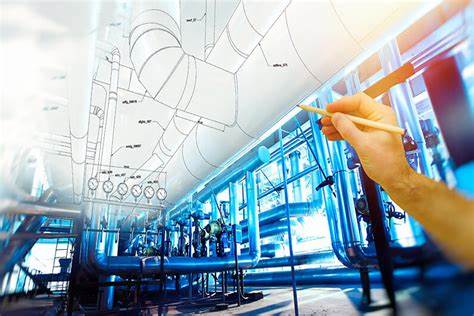
Building Automation: Revolutionizing Cost Savings and Energy Efficiency
Introduction
Building automation systems are playing a crucial role in optimizing cost savings and enhancing energy efficiency across various sectors. By incorporating advanced technologies, businesses and organizations can streamline their operations, reduce energy consumption, and achieve significant financial benefits. This article delves into the historical background, key concepts, main discussion points, case studies, current trends, challenges, and future outlook of building automation, highlighting its relevance in achieving cost savings.
Historical Background
The concept of building automation systems dates back to the 1970s when centralized control emerged as a revolutionary idea. Over time, advancements in technology led to the development of sophisticated systems capable of automating various building functions, such as HVAC, lighting, and security. Historical examples demonstrate the immense cost savings achieved through automation, with notable instances including the implementation of energy management systems in commercial buildings, resulting in significant reductions in energy consumption and operating costs.
Key Concepts and Definitions
Building automation systems encompass a range of components that work together to control and monitor various building systems. These systems play a pivotal role in energy management and cost savings by optimizing energy usage, enhancing occupant comfort, and improving operational efficiency. Energy efficiency, a key aspect of cost savings, refers to the utilization of energy in a manner that minimizes waste and maximizes output. Building automation plays a crucial role in achieving energy efficiency by regulating and optimizing energy consumption based on real-time data.

Main Discussion Points
Point: Energy Monitoring and Optimization
Real-time energy monitoring provides numerous benefits in terms of identifying energy wastage, analyzing usage patterns, and optimizing energy consumption. The importance of data analysis and optimization strategies cannot be overstated. Demand response programs and peak load management are sub-points that highlight the significance of proactive measures in reducing energy costs and improving grid stability.
Point: HVAC System Efficiency
Building automation significantly contributes to optimizing HVAC system efficiency, which accounts for a significant portion of energy consumption in buildings. Smart thermostats and temperature control systems enable precise control, resulting in cost savings through reduced energy usage. Ventilation and air quality control also play a critical role, impacting energy consumption and cost savings. Case studies further exemplify the tangible benefits achieved through the implementation of these measures.
Point: Lighting Control and Energy Efficiency
Lighting control is a key aspect of cost savings. Occupancy sensors and daylight harvesting techniques ensure that lights are only used when needed, thereby reducing energy waste. Implementation of LED lighting systems further enhances energy efficiency, resulting in substantial cost savings. Real-world case studies provide concrete examples of these successful implementations.
Case Studies or Examples
Case study: explores the implementation of energy monitoring and optimization in a commercial building, showcasing the significant reduction in energy consumption and associated cost savings. Case study: focuses on HVAC system optimization in a hospital, highlighting the enhanced operational efficiency and financial benefits achieved. Case study: examines the successful implementation of lighting control and energy efficiency strategies in a school setting, showcasing substantial cost savings.

Current Trends or Developments
Building automation is currently witnessing the integration of artificial intelligence and machine learning, allowing for more advanced and predictive control systems. The Internet of Things (IoT) has also had a profound impact on cost savings through automation by enabling seamless connectivity and data exchange between various building systems. Additionally, the use of predictive analytics in energy management has gained traction, empowering businesses to make informed decisions and further optimize energy usage.
Challenges or Controversies
Privacy and security concerns related to building automation systems have emerged as significant challenges. Protecting sensitive data and ensuring secure operation is crucial in maintaining trust. The cost of implementing and maintaining building automation systems is also a concern for many organizations. Resistance to change and lack of awareness pose additional challenges that need to be addressed for widespread adoption.

Future Outlook
Anticipated advancements in building automation technology include more sophisticated control systems, increased integration with renewable energy sources, and enhanced interoperability. Smart cities present immense potential for cost savings and energy efficiency through the comprehensive adoption of building automation technologies. Government regulations and incentives play a pivotal role in driving the widespread adoption of these technologies.
Conclusion
Building automation systems offer immense opportunities for cost savings and energy efficiency. By optimizing energy consumption, streamlining operations, and leveraging advanced technologies, organizations can achieve significant financial benefits while contributing to a sustainable future. The importance of cost savings through building automation cannot be underestimated, and it is imperative for businesses and governments to embrace these technologies for a more energy-efficient future.




